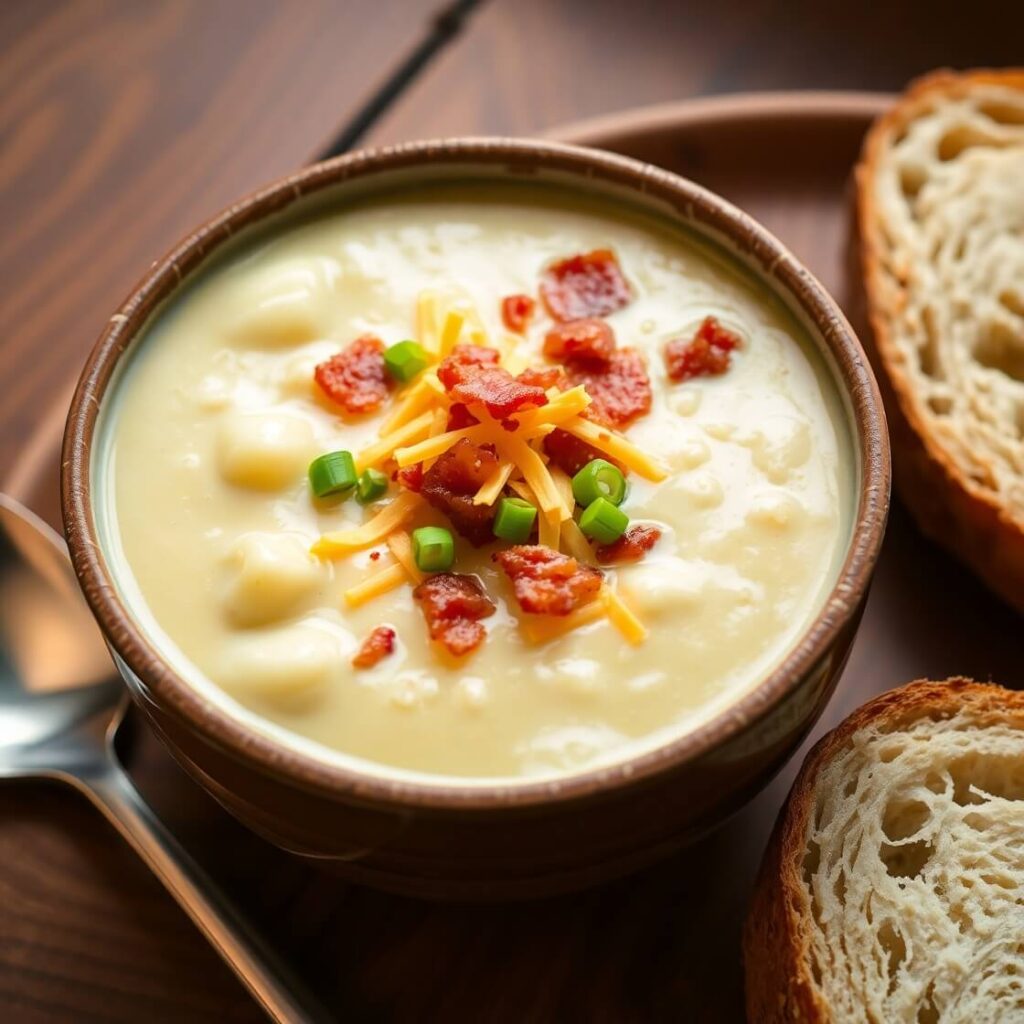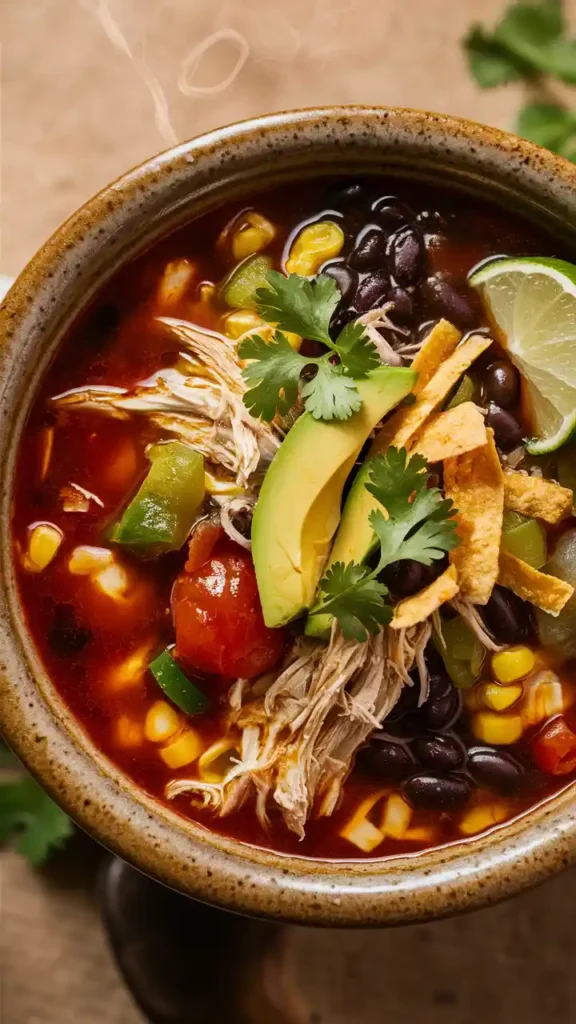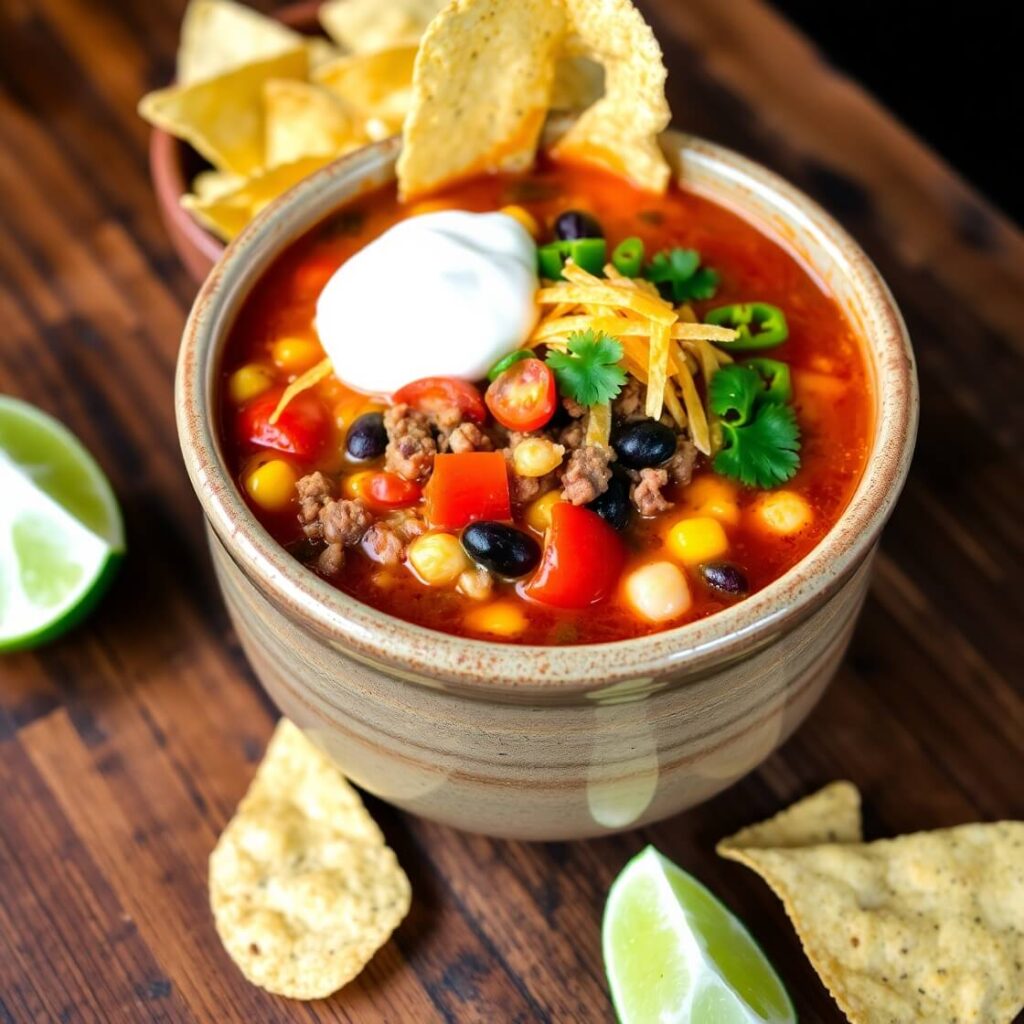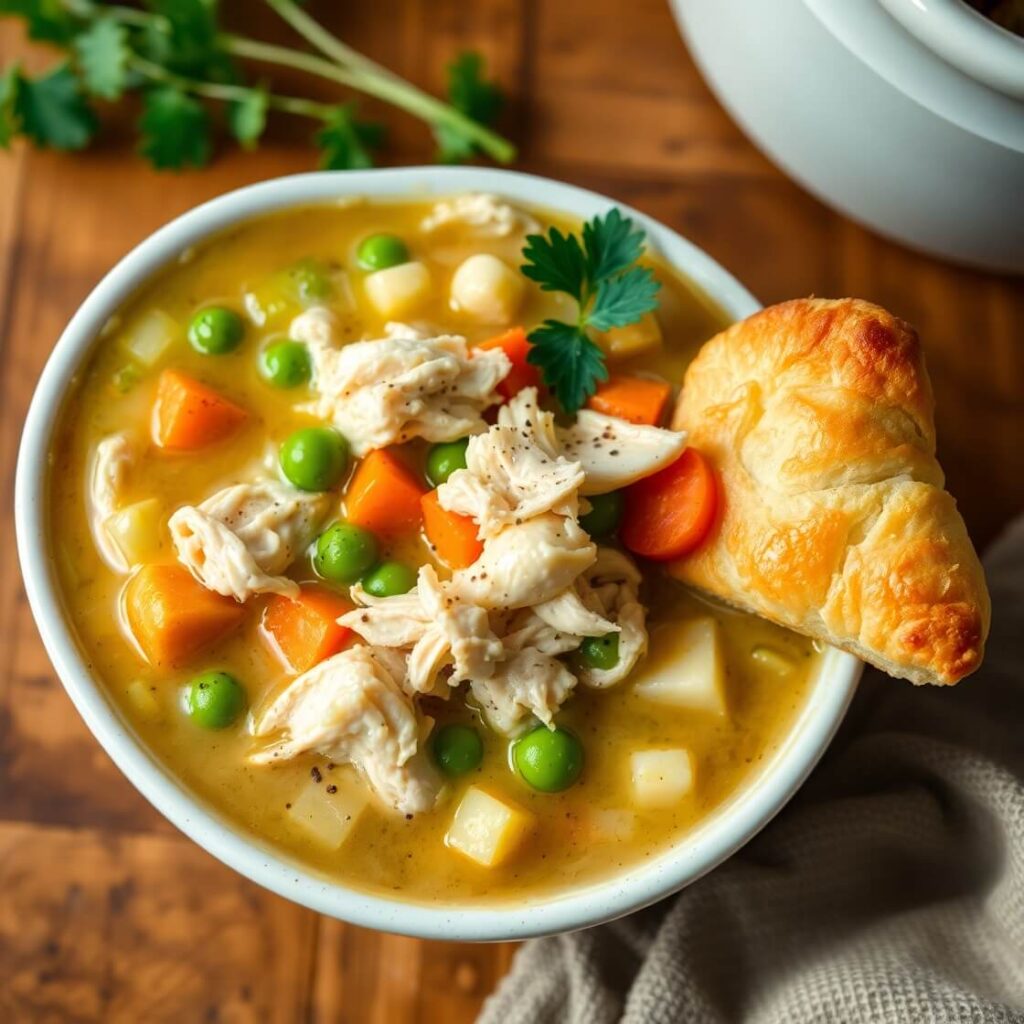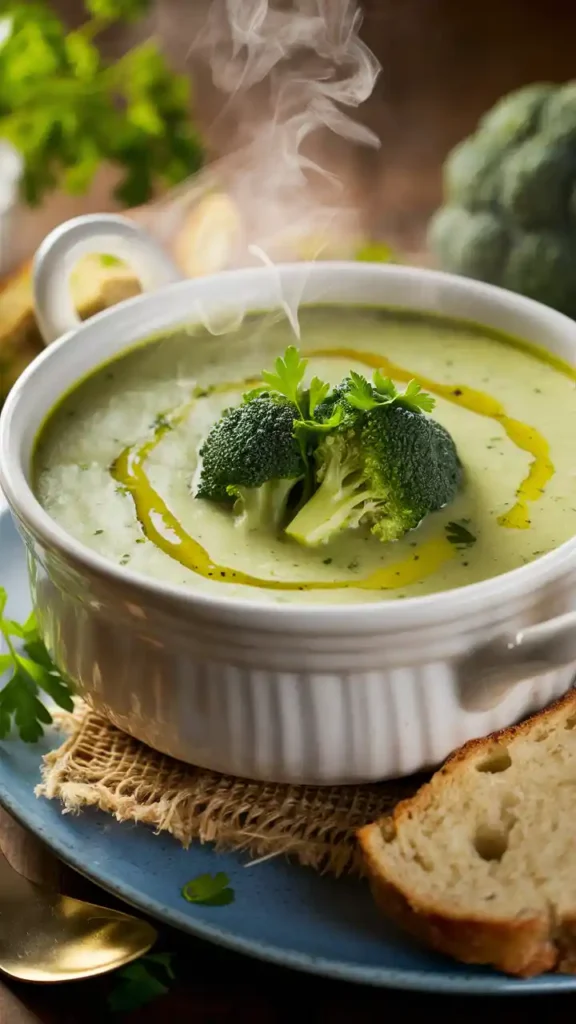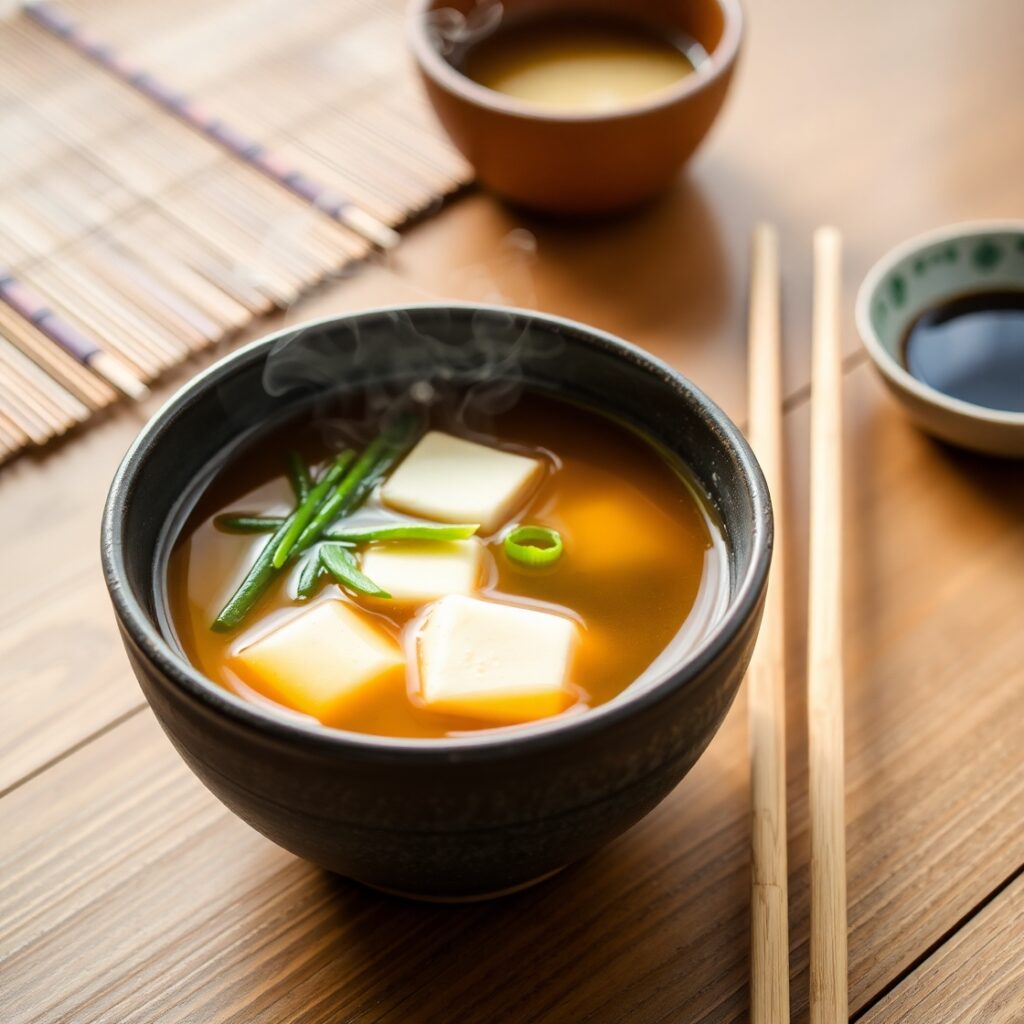Potato Soup Recipe
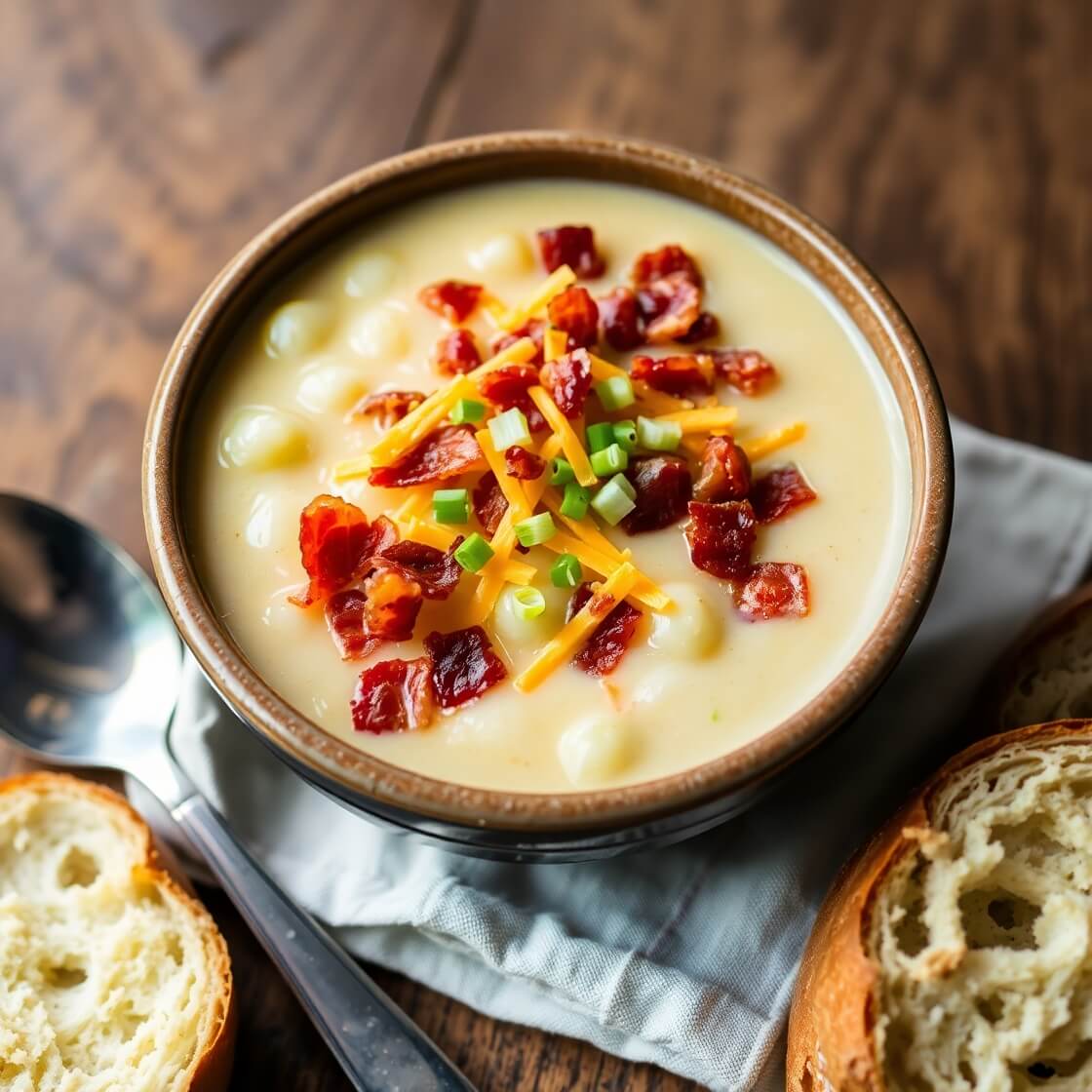
I’ll never forget the first time I tried making potato soup for a chilly autumn evening. I was in a rush, juggling dinner prep while my kids were practicing their violin upstairs, when I accidentally poured the cream in too quickly. The soup curdled instantly, and for a moment, I thought dinner was a disaster. But as I fished around and slowly stirred, adding a splash of broth and lowering the heat, the magic returned. That slightly panicked batch turned out to be the creamiest, most comforting soup I’ve ever made.
Since then, I’ve perfected a version that’s almost foolproof—rich, hearty, and cozy without being heavy. It’s the kind of soup that makes the kitchen smell like fall itself, drawing everyone in even before they’ve washed their hands. Whenever I serve it, my kids inevitably ask for seconds, and even my husband—who isn’t usually a soup person—keeps sneaking spoonfuls straight from the pot.
This potato soup has become our family ritual on crisp evenings. It’s simple but versatile, letting you adapt it to what you have on hand, whether that’s extra cheese, a few herbs from the garden, or a handful of crispy bacon bits. And the best part? You can make it ahead, letting the flavors deepen while you tackle the rest of dinner prep—or enjoy a quiet evening with leftovers that taste even better the next day.
Lessons Learned and Pro Tips
If there’s one thing I’ve discovered making potato soup over the years, it’s patience and temperature control. Pouring cream too quickly or cooking on high heat is a common mistake that turns a silky soup grainy. Instead, bring your base to a gentle simmer before adding dairy, and stir constantly.
Peeling potatoes is another small hurdle—some varieties hold their shape better than others. Yukon golds are my go-to for their creamy texture, but russets work well too if you don’t mind a slightly fluffier consistency. One tip I swear by: cut your potatoes into even chunks so they cook uniformly. There’s nothing worse than stirring for ten minutes only to find half the potatoes are still crunchy.
Don’t forget seasoning as you go. Salt, pepper, and a touch of garlic or onion powder enhance the potatoes’ natural flavor. I’ve ruined batches before by waiting until the end to season; a well-layered flavor makes all the difference.
Gathering the Ingredients
I like to think of this recipe as a kitchen scavenger hunt. You’ll need some staples and a few touches that elevate the flavor. Here’s my personal take on the ingredients and why I love them:
- Potatoes: Yukon golds for creamy texture or russets for a slightly lighter soup. Choose firm, unblemished ones.
- Onion: A yellow onion adds depth without overpowering the potatoes. White or shallots work, too.
- Celery & Carrot: These aren’t just fillers—they give the soup a subtle sweetness and earthy undertone.
- Garlic: Just a few cloves make a world of difference. Roast them beforehand for a softer, sweeter taste.
- Chicken or Vegetable Broth: This forms the base. Homemade is ideal, but store-bought works in a pinch.
- Cream or Milk: I prefer half-and-half for richness without heaviness, but whole milk or a plant-based option works too.
- Butter & Flour: For a light roux to thicken the soup. You can skip the flour for a gluten-free version by blending some potatoes into the liquid.
- Herbs & Spices: Thyme, parsley, or a pinch of nutmeg elevate the flavor.
- Optional Toppings: Crispy bacon, shredded cheese, or chopped chives make this soup irresistible.
Shopping tip: look for potatoes that feel heavy for their size, indicating they’re dense and starchy enough for creamy soup. Fresh herbs can be substituted with dried ones, though I always prefer a handful of chopped parsley for color and freshness.
The Secret Behind Its Flavor
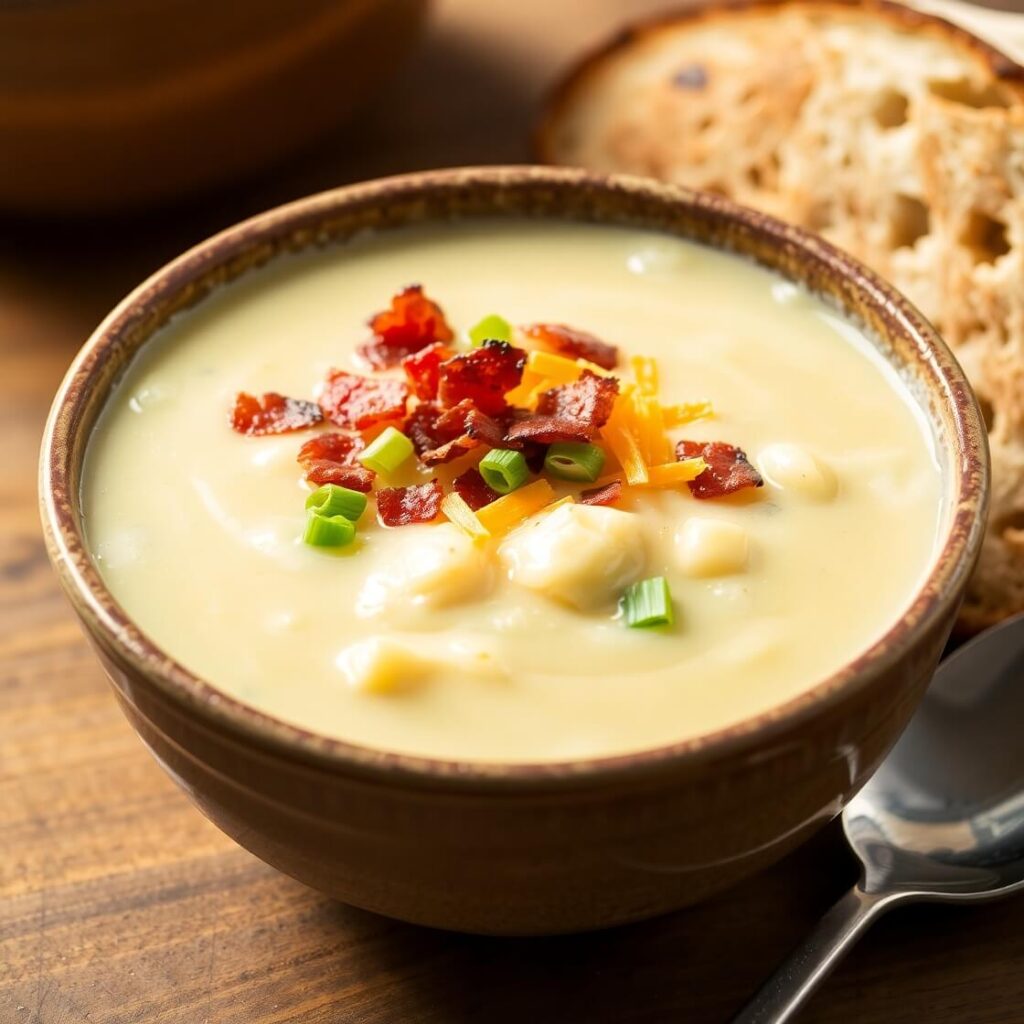
What makes this potato soup so comforting isn’t just the ingredients—it’s the technique. First, sautéing onions, garlic, celery, and carrots in butter builds a flavor base that’s rich and aromatic. Then, simmering potatoes slowly in broth ensures they soak up all those flavors. The gentle addition of cream at the end creates a luscious texture without weighing the soup down.
I also like to let the soup rest for a few minutes before serving. This gives the flavors time to meld, and often, what tastes “good” straight from the pot becomes downright irresistible after a short pause. The secret is balancing the creamy richness with a hint of savory depth—thyme, a dash of white pepper, and a touch of salt are crucial here. It’s like a hug in a bowl: comforting, familiar, and just a little indulgent.
Step-by-Step Guide to Perfect Potato Soup
Here’s how I make it without ever repeating my initial cream-curdling fiasco:
- Sauté the aromatics: Melt butter in a large pot, then add onions, celery, and carrots. Cook over medium heat until softened and fragrant, about 5–7 minutes. Add garlic for the last 2 minutes to avoid burning.
- Add potatoes and broth: Peel and chop potatoes into even cubes. Add to the pot with enough chicken or vegetable broth to just cover. Bring to a gentle simmer.
- Simmer until tender: Cook for 15–20 minutes, stirring occasionally, until potatoes are fork-tender.
- Create a creamy base: For extra creaminess, remove about a third of the soup and blend until smooth, then return it to the pot. This thickens the soup naturally.
- Add dairy carefully: Lower heat to a gentle simmer and stir in cream, half-and-half, or milk gradually, allowing it to warm without curdling.
- Season thoughtfully: Taste and add salt, pepper, and herbs as needed. A pinch of nutmeg or smoked paprika can give an unexpected depth.
- Serve and garnish: Ladle into bowls and add toppings if desired—bacon bits, shredded cheddar, or fresh chives are my favorites.
The aroma that fills the kitchen at this stage is worth every step. Even if you’ve had a rough day, the smell of simmering potatoes, butter, and garlic is strangely therapeutic.
Cooking Time Snapshot
For readers who like a quick glance:
- Prep time: 15–20 minutes
- Cook time: 30–35 minutes
- Total time: 45–55 minutes
- Yield: 6–8 servings
It’s a recipe that fits perfectly into a weeknight routine yet feels indulgent enough for a weekend dinner.
Substitutions & Adaptations
One of the best things about this potato soup is its flexibility. Here are a few ways I tweak it:
- Vegan version: Swap butter for olive oil, use plant-based cream or coconut milk, and replace chicken broth with vegetable broth.
- Gluten-free: Skip the flour roux, or use a cornstarch slurry to thicken the soup.
- Cheesy version: Stir in shredded sharp cheddar at the end for a richer flavor.
- Kid-friendly: Mash some potatoes instead of blending the soup entirely—kids love spotting little chunks.
A tip I learned from trial and error: when using coconut milk, add it slowly and taste frequently. Its sweetness can dominate, so balance with a little salt or even a squeeze of lemon juice to brighten the flavor.
Pro Notes and Common Mistakes to Avoid
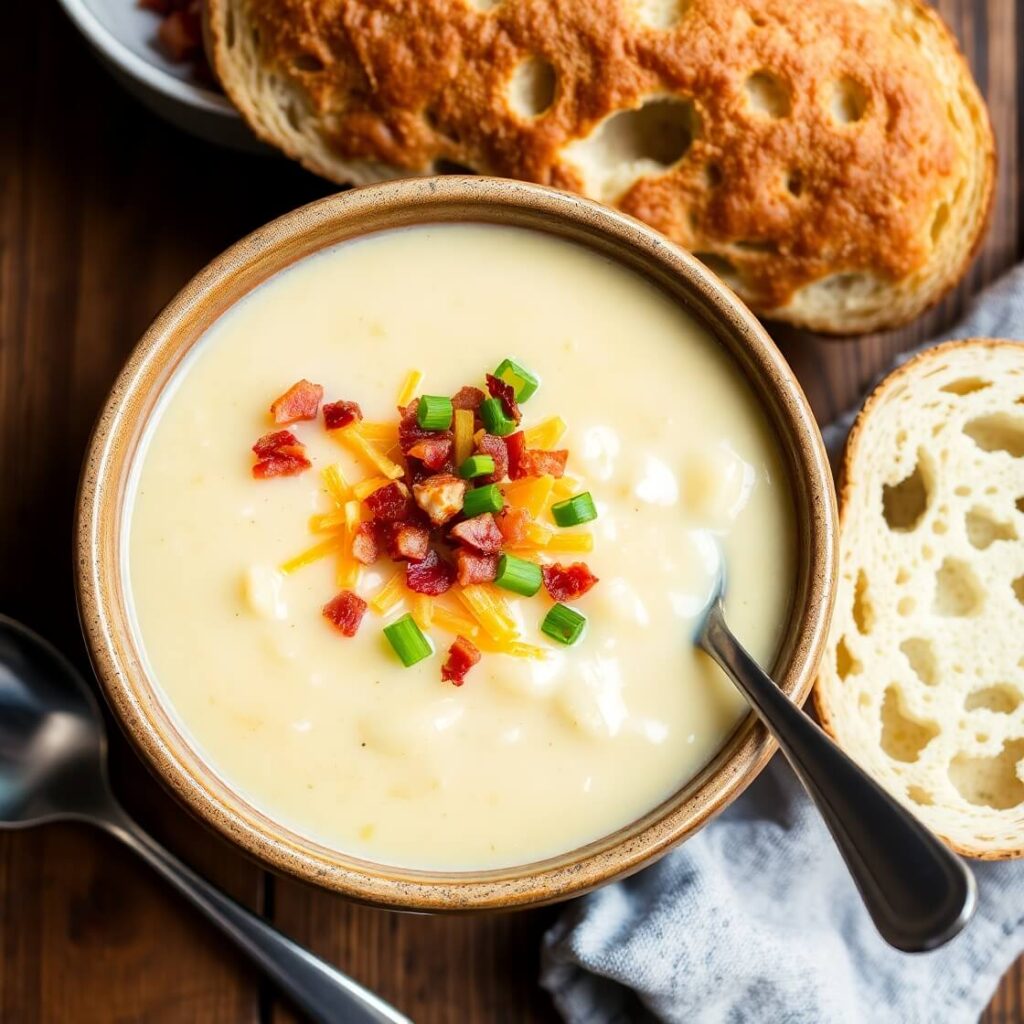
Even after making potato soup for years, I still see little traps that can derail the dish if you’re not careful.
One common mistake is overcooking the potatoes. Yes, you want them soft, but if they start falling apart too much before you add the cream, the texture can become gummy. My solution: check early, taste often, and remove from heat the moment a fork slides through easily.
Another is adding dairy too quickly. I learned this the hard way—pouring cream straight into a rolling boil once left me with a curdled mess. Now, I always lower the heat and whisk in dairy gradually, stirring constantly. The difference in smoothness is night and day.
Underseasoning is another trap. Potatoes are naturally bland, so layering flavor at every stage—from sautéing the aromatics to adjusting salt at the end—is crucial. Don’t be afraid to taste along the way. A little salt here and there builds a soup that’s deeply flavorful rather than flat.
Finally, skipping the blending step is a missed opportunity. Even mashing a portion of the soup before adding dairy creates a creamy, luxurious texture without being heavy. You get all the comfort of a classic potato soup with a professional touch.
Storage and Make-Ahead Tips
One of my favorite things about this soup is how well it keeps. It’s perfect for batch cooking or making ahead for busy nights.
- Refrigerator: Store in an airtight container for up to 4 days. Reheat gently on the stovetop over low heat, stirring occasionally. You may need to add a splash of broth or cream to loosen it back up.
- Freezer: This soup freezes beautifully. Cool completely, then pour into freezer-safe containers. It will keep for 2–3 months. When reheating, thaw in the fridge overnight and warm slowly over low heat, stirring occasionally.
- Make-ahead tip: If you’re prepping the base ahead, you can chop vegetables and potatoes the night before and keep them in the fridge. When you’re ready to cook, start by sautéing and continue with the usual steps. This saves 10–15 minutes of prep on a busy evening.
One of my personal hacks is freezing small portions in individual containers—perfect for lunch, a quick dinner, or even sending a little comfort soup to a friend in need.
Frequently Asked Questions About Potato Soup
Can I make this soup vegan?
Absolutely. Use olive oil instead of butter, plant-based cream or coconut milk, and vegetable broth. The flavor will be slightly different, but still rich and satisfying. Adding a bit of nutritional yeast can give it a cheesy depth.
How can I make it thicker without cream?
You can blend a portion of the cooked potatoes back into the soup or add a cornstarch slurry (1 tablespoon cornstarch mixed with 2 tablespoons cold water) to the simmering soup. This thickens naturally without dairy.
Can I use red potatoes?
Yes, but keep in mind red potatoes hold their shape more than Yukon golds, so the soup will be chunkier rather than creamy. If you want a creamier texture, blend a few of the potatoes.
Can I add extras like bacon or cheese?
Definitely! Crispy bacon, shredded cheddar, sour cream, or chives are classic toppings. Add them just before serving for the best texture.
How do I avoid curdling the cream?
The trick is gentle heat. Lower the stove to a soft simmer and stir constantly when adding cream. Avoid boiling once the dairy is in.

Potato Soup Recipe
- Total Time: 50 minutes
- Yield: 6 1x
- Diet: Vegetarian
Description
This comforting potato soup is a creamy, hearty delight perfect for any season. Made with tender potatoes simmered in a savory broth, enriched with sautéed onions and garlic, and finished with cream, it’s the ultimate bowl of warmth and satisfaction. Whether you’re craving a quick weeknight meal or something special for guests, this recipe delivers cozy flavors with simple ingredients. Customize it with your favorite toppings for a personalized touch every time.
Ingredients
- 4 large Russet potatoes, peeled and diced
- 3 tablespoons butter
- 1 medium yellow onion, diced
- 3 cloves garlic, minced
- 3 tablespoons all-purpose flour
- 4 cups chicken or vegetable broth
- 1 cup whole milk
- 1/2 cup heavy cream
- Salt and black pepper, to taste
- Optional toppings: cooked bacon, shredded cheddar, chopped green onions
Instructions
- Melt butter in a large pot over medium heat. Add onions and cook until translucent.
- Stir in garlic, cook for 1 minute.
- Sprinkle flour over onions and garlic; stir constantly for 2 minutes to form a roux.
- Slowly add broth, stirring to avoid lumps. Add diced potatoes.
- Bring to a boil, then reduce heat and simmer for 20–25 minutes until potatoes are tender.
- Use an immersion blender to partially blend soup, leaving some chunks.
- Stir in milk and cream, simmer uncovered for 5–10 minutes until thickened.
- Season with salt and pepper. Serve hot with desired toppings.
Notes
- For a dairy-free version, substitute butter with olive oil, milk and cream with coconut or almond milk. Adjust seasoning accordingly. Partial blending controls texture—blend less for chunkier, more for creamier. Use homemade broth for richer flavor.
- Prep Time: 15 minutes
- Cook Time: 35 minutes
- Category: Soup
- Method: Stove-top
- Cuisine: American
Nutrition
- Serving Size: 6
- Calories: 280
- Sugar: 3g
- Sodium: 550mg
- Fat: 15g
- Saturated Fat: 9g
- Unsaturated Fat: 5g
- Trans Fat: 0g
- Carbohydrates: 28g
- Fiber: 3g
- Protein: 5g
- Cholesterol: 40mg

